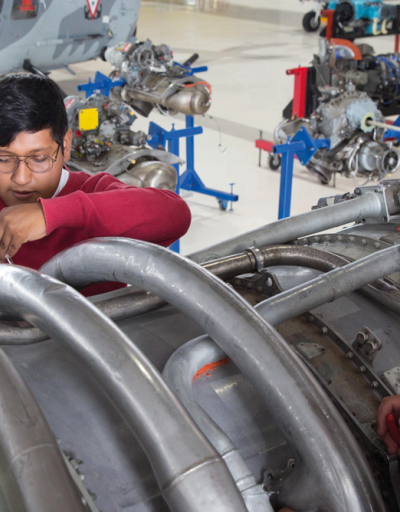During the commodities boom, investment in Latin America (Chapter 7) was channelled mainly towards economic expansion, rather than towards reinforcing existing infrastructure or supporting innovation and risk-taking. The end of the commodities boom has, consequently, ushered in a period of stagnant economic growth, coupled with a drop in research intensity among the regional heavyweights of Argentina and Mexico.
The concept of an innovation system is now widely incorporated into STI policies. However, demand for knowledge in the productive sector remains weak. Latin American companies operating in more than one country (multilatinas) are playing a greater role than previously but are not closely connected to national innovation systems. Multinationals with subsidiaries in the region tend to utilize existing knowledge rather than engage in local research.
More countries are developing ‘home-grown’ policies that involve experimentation, in preference to adapting policies designed abroad. These policies stress social innovation for sustainable development and are increasingly integrating local and indigenous knowledge systems.

However, policy-making remains characterized by U-turns that prevent long-term planning. This can undermine investor confidence and hamper innovation. Some countries are also backtracking on broad public participation in decision-making.
Sustainability science is emerging as a regional research focus. One example is the Colombia Bio programme, which aims to nurture a culture of respect for biodiversity; it is enriching the scant taxonomic record and supporting bioprospecting to foster the development of products and services with high added value.
Scientific output in mainstream journals has grown in all but Cuba and Venezuela. Better postgraduate education in some countries may be partly responsible for this trend. The downturn in Cuban output may be linked to the restoration of the US blockade in 2017, which has negatively affected Cuban resources for R&D, including planned salary rises to discourage brain drain following the lifting of restrictions on international travel in 2012. Venezuela is experiencing severe brain drain, with more than 3 million citizens having migrated to Colombia, Peru, Ecuador and Brazil in 2019.
One example of active multilateral collaboration is the Central American Integration System (SICA), which has been building resilience to climate change. In May 2020, SICA signed an agreement with Canada’s International Development Research Centre for a project to strengthen the policy-making capabilities of the national research and innovation bodies of all member states.
At the regional level, there have also been bottom-up initiatives in biotechnology, space science and open science, among others.
- Figure 7.1: Socio-economic trends in Latin America
- Figure 7.2: Instruments promoting social or inclusive innovation in selected Latin American countries
- Figure 7.3: Trends in research expenditure in Latin America
- Figure 7.4: Trends in human resources in Latin America
- Figure 7.5 Trends in scientific publishing in Latin America
- Figure 7.6: Volume of scientific publications from Latin America by cross-cutting strategic technology, 2011–2019
- Figure 7.7: Trends in innovation in Latin America






